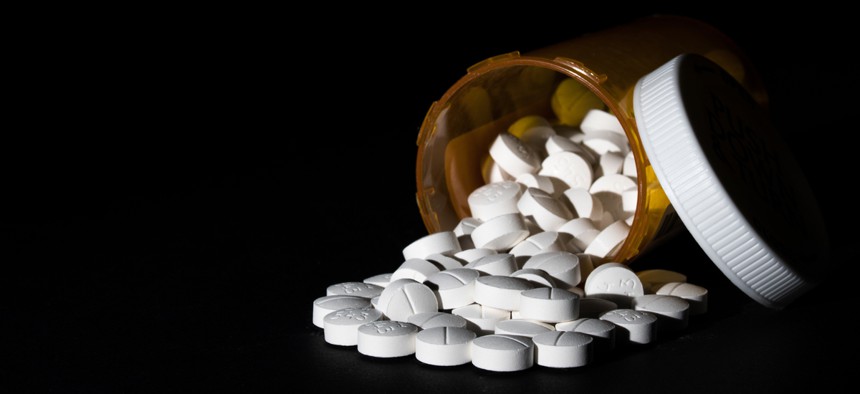Thousands of Pennsylvania Hospitalizations Related to Opioid Use

One in 37 hospitalizations in Pennsylvania last year was related to opioid abuse, researchers found. Shutterstock

Connecting state and local government leaders
Opioids are frequently a contributing factor to hospitalizations in Pennsylvania, and not just with overdoses, according to new data.
One in 37 hospital admissions in Pennsylvania were related to opioid abuse in 2017, according to data released this month by the Pennsylvania Health Care Cost Containment Council.
The state saw a total of 36,712 hospital admissions related to opioids last year, according to the council's research. Overdose was the primary concern in 3,500 of those, while opioid dependence and abuse was a key factor in 2,736 admissions.
“These patients are often experience withdrawal and other symptoms,” according to the report.
In the remaining 30,476 hospital admissions, patients came to the hospital for other afflictions—but also had opioid use disorder. Primary reasons for hospitalization in those cases included mental health disorders, substance abuse and alcohol-related issues, and septicemia and skin infection, common conditions among intravenous drug users.
Statewide, the number of opioid-related hospital admissions remained relatively stable from 2016 to 2017, but more than doubled from 14,711 in 2008 to 29,958 in 2015. Those numbers are likely underreported, the report notes, due to new hospital coding requirements that better identify opioid-related afflictions but did not go into effect until late 2015. (For example, the national rate of opioid-related hospitalizations jumped from 254 to 289 per 100,000 residents immediately following the implementation of the new codes, according to national data.)
The data helps paint a comprehensive picture of opioid addiction in Pennsylvania, according to Joe Martin, executive director of the Pennsylvania Health Care Cost Containment Council.
“These findings show a bigger picture of what we are facing with the opioid crisis and suggest how important it is to get immediate help to those addicted to opioids and to also identify lasting solutions to battle this problem,” Martin said in a statement.
Most commonly, Medicaid paid for the opioid-related hospitalizations, accounting for 44.3 percent of those admissions in 2017 while comprising just 16.9 percent of all hospitalizations. Medicare paid for 27.5 percent of admissions, while commercial payers accounted for 23.5 percent.
Younger people are more affected by opioid addiction. “While residents in age groups 15-34 and 35-54 comprised 35.2 percent of all hospitalizations, they represented 72 percent of the opioid-related admissions,” the report says.
Lower-income communities where the average household income is less than $30,000 per year had the highest rate of opioid-related hospital admissions at 788.6 per 100,000 residents, 128 percent higher than the statewide rate of 345.9. Hospitalization rates were also higher among residents living in urban areas (361.1 per 100,000) than those residing in rural communities (304.9).
Kate Elizabeth Queram is a Staff Correspondent for Government Executive’s Route Fifty and is based in Washington, D.C.

NEXT STORY: Young and Homeless in Washington, D.C.




